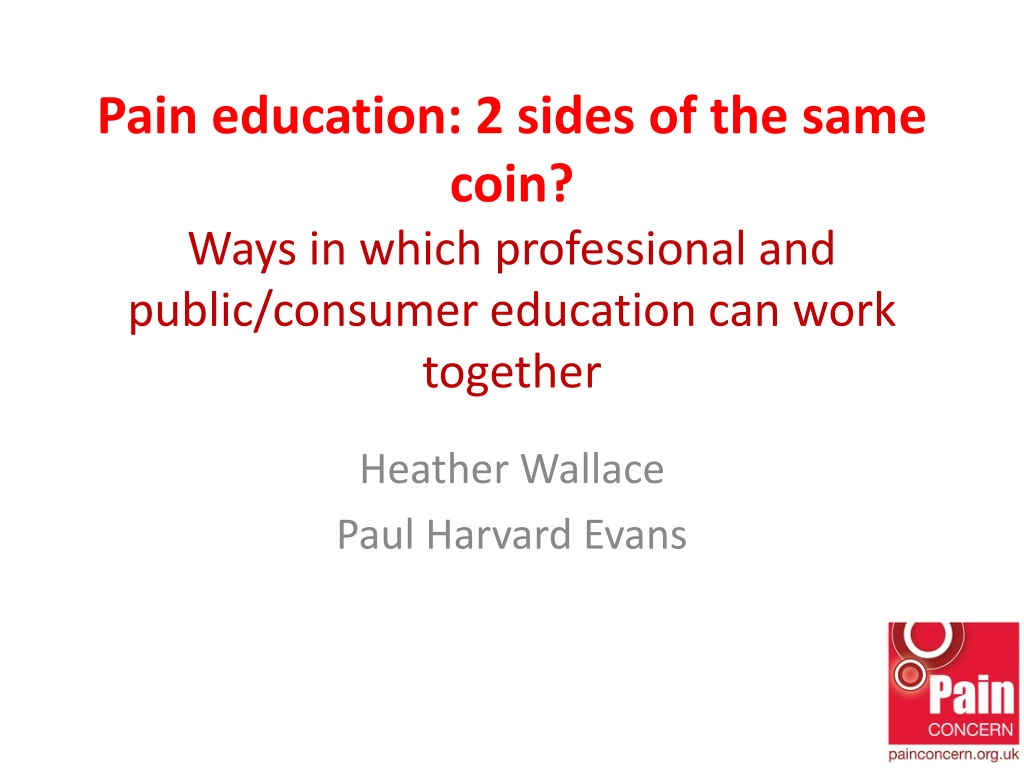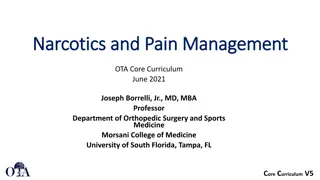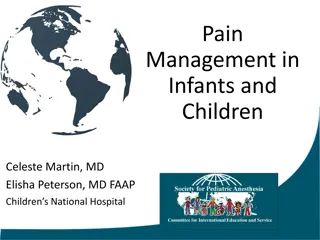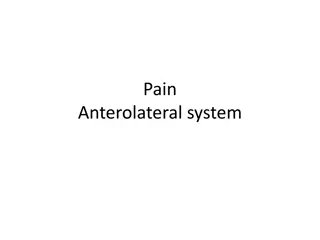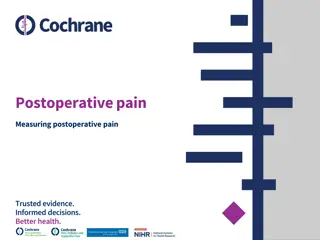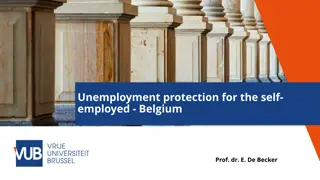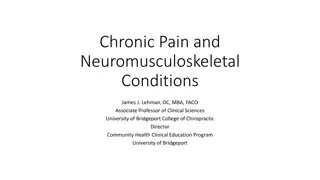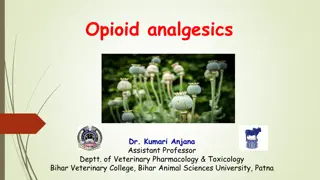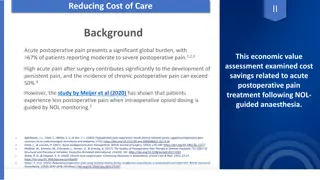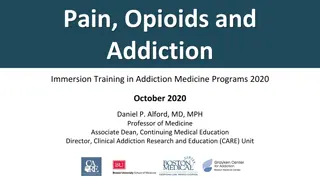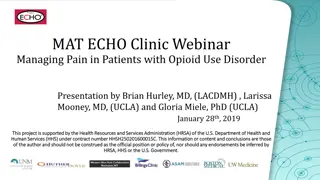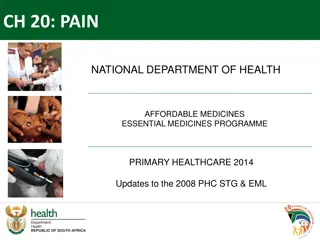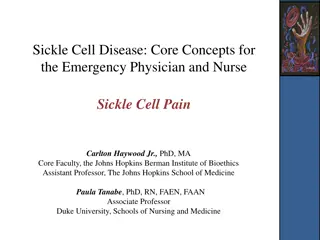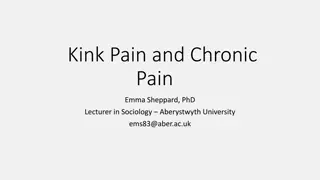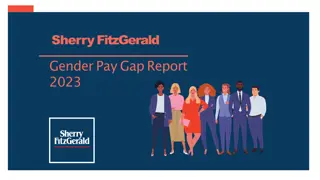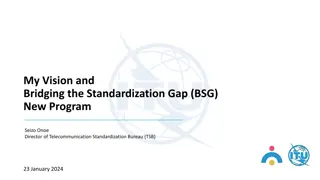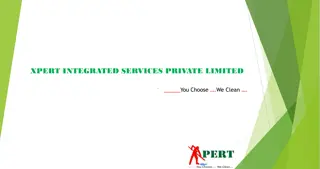Exploring Pain Education: Bridging the Gap between Professionals and the Public
Pain education involves collaboration between healthcare professionals and the public to challenge ingrained beliefs, provide proper understanding of pain, and encourage open communication. This article discusses the importance of effective pain education, the role of professional and public education, and the need to address prejudices and misconceptions surrounding pain management.
- Pain education
- Healthcare professionals
- Public awareness
- Professional collaboration
- Ingrained beliefs
Download Presentation

Please find below an Image/Link to download the presentation.
The content on the website is provided AS IS for your information and personal use only. It may not be sold, licensed, or shared on other websites without obtaining consent from the author. Download presentation by click this link. If you encounter any issues during the download, it is possible that the publisher has removed the file from their server.
E N D
Presentation Transcript
Pain education: 2 sides of the same coin? Ways in which professional and public/consumer education can work together Heather Wallace Paul Harvard Evans
Learning objectives To define ways that health professionals can explain pain properly and identify appropriate resources. To open communication channels for experience and knowledge sharing within the pain community.
The best educators inspire Can change the course of our life and who we are Inspire us with love of their subject Make us curious We soak up information and retain it We return to the subject We keep learning
PAIN EDUCATION Two currencies, two coins? Healthcare professional Research Teaching/mentoring students Clinical work Public education Support groups run by patients Self management programmes Helplines run by charities
Ingrained beliefs and prejudices pain must mean damage there must be a cause pull yourself together you look fine pain killers are addictive, have toxic side-effects will make you fat will stop working
Ingrained beliefs and prejudices Physiotherapy makes your pain worse; what s the point of trying it again. Mindfulness smacks of Buddhism; it clashes with your beliefs. Super human efforts are needed every day to remain positive and you are utterly exhausted. You are gloomy about ever getting back to work who would want you?
Patrick Walls Therapeutic community The problem: the experiences of a person in pain depend significantly on their beliefs about it. His solution is to create a therapeutic community that will: attack prejudice sweep away hampering beliefs about pain.
Therapeutic community Healthcare professionals, patients, society Recruit the patient as a member of his own treatment team Patients and therapists become comrades We must take on do-it-yourself responsibilities which require: Education Acceptance Encouragement
Therapeutic community We cannot leave it to the specialist to do all that is needful Defeating Pain: the war against a silent epidemic
Three Steps of Liberation 1. Regaining the possibility of physical activity 2. Reawakening a sense of expectation responding with hope and confidence to every kind of assistance. 3. A positive attitude to exploration you are actively exploring the possibilities of a prescribed medicine, diet, exercise
Education Healthcare professionals must use knowledge and skills great imaginative effort Dry text-book education is not enough to rescue a depressed, inactive patient
Education Everyone s responsibility Can t be delegated to other members of the pain team Or to consumer education groups/lay-led support services
Education in a therapeutic community Must reach beyond the clinic Inform and support everyone affected by pain Family Carers Employers
Mass education Attenborough s inspirational programmes Authoritative content is the experts responsibility Involves teamwork of dedicated, skilled professionals Accessible but not dumbed down Backed by marketing and publicity
Pain Concern Our vision To bring together healthcare professionals and people living with pain People wanted: access to support to be kept up to date to hear from experts So we started publishing Pain Matters magazine
Pain Concern Our vision A channel of communication bringing together the pain community to talk about the issues Patients of general practitioners could learn from top specialists Benefit of peer support A ready support system Educate the healthcare community We wanted to give pain a voice
Airing Pain 42 podcasts also available as CDs Evaluation completed Reply on support of healthcare professionals Advisory Board Let us into your clinics so we can make interesting programmes Help us with marketing Help us fundraise
EVALUATION OF AIRING PAIN DR LINDA POLLOCK Linda.pollock5@btinternet.com
AIRING PAIN Funded by a NAPP Chronic Pain Award Created 2-weekly radio programmes with Able Radio, UK s 1st disability radio station Targeted people in pain Aimed to take support to sufferers in their own home Developed 36 programmes (Sept 2010-2012)
METHODOLOGY Questionnaire Using Survey Monkey (Simon Packer) Descriptive info about the demography, the experience and views of listeners / professionals Qualitative feedback about the detailed content of programmes Evaluation of the listener figures Quantitative data on number of downloads of podcasts and CDs. David Deacon Feedback about the most popular and least popular shows
Challenge to get survey responses! Encouragement given by Able Radio Publicised by producer in programme By Pain Concern in newsletters and website via our social networks, twitter and facebook Pain Clinics and sister charities informed HQ made it easy to complete by telephone 120 returned: average download approx 340 (therefore roughly 30% response rate)
Value / benefit of the shows? The fact that chronic pain is being recognised and discussed as a distinct condition Seen as a helpline Positive feedback on content and inclusion of information, news, and views educative, an excellent resource ... Sharing of experiences and accounts of real issues from real people I loved the personal experiences and tips for self help and new interventions arriving Its gives me a lifeline, in my own time; I feel part of a pain community
Has AIRING PAIN helped you? Can you rate how Airing Pain has helped you? Can you rate how Airing Pain has helped you? Response Response Percent Percent Response Response Count Count Answer Options Answer Options 14.04% 17 Not at All 41.32% 50 A little 54 A lot 44.63% answered question answered question 121 121 skipped question skipped question 3 3
Listen again to AIRING PAIN? Do you ever listen to a programme more than once? Do you ever listen to a programme more than once? Response Response Percent Percent Response Response Count Count Answer Options Answer Options 53.7% 65 Yes 46.3% 56 No 50 Comment answered question answered question 121 121 skipped question skipped question 3 3
Would you recommend AIRING PAIN? Would you recommend Airing Pain to anyone? Would you recommend Airing Pain to anyone? Response Response Percent Percent Response Response Count Count Answer Options Answer Options 92.6% 112 Yes 7.4% 9 No answered question answered question 121 121 skipped question skipped question 3 3
Ideas for the future? Limited information provided on whether programmes helped families, friends, carers Respondents wanted to hear more from relatives living with those with chronic pain More about alternative therapies More about mental health and chronic pain GPs and other professionals should listen to the shows ..... MARKETING and PUBLICITY ++
Conclusion about AIRING PAIN? ACCESSIBLE VALUABLE More than 350 people regularly download the programmes ... it is the most informative and helpful helpline for chronic pain sufferers. It has helped me seek further treatment for my condition, which I would not have known about if I had not listened to Airing Pain. It has also helped me improve the quality of my life and cope better ... On-demand, free resource No constraints of distance ... is almost comforting because I lose the isolation of living with people who do not fully understand where I am coming from
